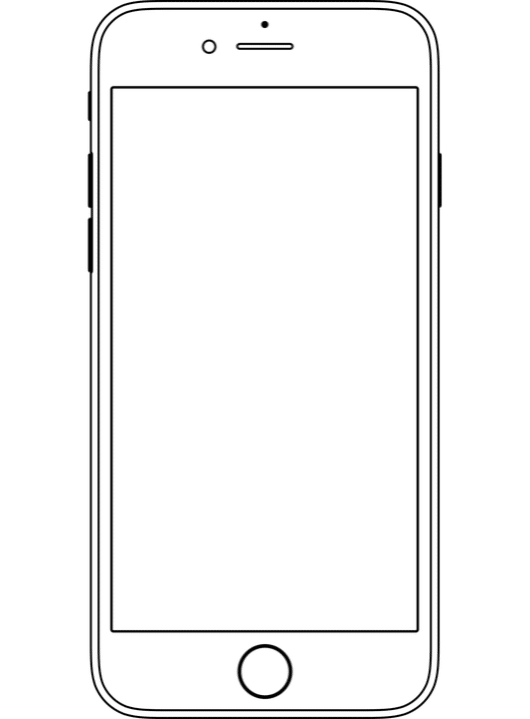A Framework for White Labeling Mobile Apps to Grow Revenue
Who Should Sell Mobile Apps by White Label?
White labeling apps is a fantastic channel for companies selling B2B in which their customer’s customer is somewhat homogeneous.
An example of where mobile apps white labeling fits well is a franchise that can provide an app for all of its franchisees, a company providing software to gyms that could also provide a mobile app, or a software provider for radio stations that can provide a mobile app for each of the local stations.
In each of these examples, the mobile app provider can deliver significant value to the ecosystem at a minimum cost by white labeling a mobile application.
Creating a high-level pitch to offer your customers a mobile app is pretty easy – Global smartphone users should exceed 5 billion this year.
Mobile users spend 90% of their time on mobile apps, and are more likely to repeat purchases through a mobile app.
There’s also a ton of data that you can collect through a mobile app that increases the value of your business.
But the easy part stops there.
Once you start thinking about the business model behind a mobile app, the development cycle, the cost to develop a custom mobile application, and the user acquisition strategy for a mobile application you start to realize the great idea is actually quite daunting.
However, every good business owner and entrepreneur knows that a daunting challenge is just an opportunity in disguise.The Challenge of Making Mobile Applications Profitable
The challenge for delivering a mobile application to customers is the initial cost, unknown support and feature development costs, and marketing without knowing whether there will be an ROI. Those challenges also create opportunity.
The opportunity for a B2B company is providing their customers a way to deliver a custom mobile application experience without the high upfront cost and ongoing development expenses, so that they can focus their investment on growing their core business.
In other words, if you can reduce the risk and cost for your business customers to provide a mobile app to their customers, you can provide a ton of value to them….and create a new revenue stream for everyone.
What Does The Model for Mobile Apps White Labeling Look Like?
An easy way to conceptualize this model is to think of a franchise.
The average franchisee’s profit is ~$80,000. Considering mobile applications often cost $50,000 – $100,000+ to build, it would be difficult, if not impossible for a franchisee to profitably build an application.
However, the franchise can build a mobile application and license the mobile app to all of their franchisees for a small fee.
This model creates a win win situation – the franchise has a new revenue stream, and the franchisee increases revenue through the app. That’s win-win.
Opportunities in B2B for White Labeling Apps
This model is easy to conceptualize for a franchise, but applicable in many other organizations.
Futuri is a SaaS technology partner to broadcasters and publishers in over 20 countries reaching more than 100 million consumers monthly. Their technology is in use in more than 1,000 TV and radio stations around the globe.
They started in 2009 by developing software focused on increasing user engagement in the media industry, and Futuri attracted a strong customer base of stations by improving how the stations deliver content to their listeners/viewers.
In 2015 Futuri saw an opportunity to help their customers grow their business through mobile applications and launched their mobile app division. This solution allowed their customers to deploy mobile apps quickly and affordably while focusing on their core competency of delivering content.
Futuri focused on delivering a service to their customers that allowed them to minimize the risk and cost of deploying a mobile application.
However, they knew that branding was extremely important for their customers to succeed.
By white labeling apps, they allowed customers to use their own branding, and customize the functions and features that would resonate with their unique audience. They did this by leveraging React Native which reduced the need for deciding between custom iPhone development or Android devices, as it’s a cross-platform framework. A few of the features their customers can customize include branding, video streaming, weather, alarm clocks, push notification, news, flash contests, live chat, and more.
A Framework for White Labeling Mobile Apps For Your Customer to Grow Revenue
1. Customers
When white labeling mobile apps, your customer is the company paying you to brand your application. Start with that core customer to understand what they need, and what moves the needle for them.
It wasn’t long ago when the internet was new that companies had to have a website, but they wasted a lot of money because they never stopped to ask why.
The same happened with the rise of social media – “We need a facebook page”…but why? Thousands of businesses started social media pages without a strategy, and a social channel with the most recent post from 2 years ago actually hurt their brand.
Now we’ve arrived at the same place with mobile applications. “We need a mobile application”…but why?
The value of a branded application will change greatly depending on the industry, but here are a few ways that white labeling apps might help your customers.
- User engagement – If your customer is a radio station, or media outlet, their core driver is ad revenue. That means increasing user engagement will be extremely valuable, and you should design your mobile app strategy around increasing their followers, and increasing their repeat followers/listeners.
- Increased revenue – Who says no to more revenue? Stores can increase revenue and traffic through an eCommerce application. Pharmacies can increase revenue through a mobile app that manages refills. This is almost always the ultimate goal.
- Reduced cost – Reduce the cost for your customers, leave more on their bottom line, and they will love you forever. Property management companies can reduce cost by scheduling maintenance through an application. Doctors offices can decrease cost and smooth demand by offering scheduling and current wait time information through a mobile app.
Use this to think about the value for your customers, their experience, and don’t forget to talk to actual customers. Those discussions will decrease the risk, and help ensure you get it right the first time.
If you’re not familiar with The Lean Startup, I highly recommend the read at this stage. It provides great advice on engaging customers early so that you can find product/market fit faster, and get to market faster.
2. Stakeholder Analysis
A stakeholder analysis is easy, valuable, and underutilized. Most people don’t do it, and don’t take it seriously.
The goal of a mobile app stakeholder analysis is understanding all of the stakeholders of the mobile app including direct stakeholders, secondary, and tertiary.


At first, the stakeholder analysis might seem silly.
Who does my app impact? My customer of course!
But who else? Hmmm…their customer!
Who else? Our vendors!
So then your stakeholder analysis gets a little more complicated…



Are you done?
Probably not.
What’s your mobile app doing? Collecting data, right! So now you have a database, and that could have even more stakeholders.
Like who you ask? Well, whoever might find that data valuable.
Your board? Might this information be helpful to identify a new location centrally located to your users? Your sales people?
Once you know which customers are actively engaged, how can you upsell or cross-sell them?
How about third parties – would this data be helpful for one of your vendors to help schedule production?
As you build out your stakeholder analysis, you’ll start to see opportunities that weren’t apparent right away.
Perhaps these new opportunities will provide even greater value than the app itself.
Here’s an example of a recent stakeholder analysis for a mobile chat app that we’ve developed at Parsed.
However, as we built this stakeholder analysis we realized that the opportunity was far greater than subscriptions to a service.
We were collecting data that would be highly valuable to help certain stakeholders in the medical field and certain government entities.
Knowing this means that we can now build this application and collect the information that will make the app most valuable for these stakeholders.
Consider this in terms of white labeling mobile apps. You likely sell B2B, and your customer is the business, but their customer is a consumer. If you build a mobile application for your customer with the intent of white labeling, but without going through a stakeholder analysis, it’s probably going to fall short of providing value for their customer.
We’ll dive deeper into the stakeholder analysis in a future article.
3. Workflow
One of the first things you’ll do when scoping out the project with a developer is building out the workflow. This process helps to align the business leader, project manager, and development team to ensure they are building the right experience.
A good project manager will build wireframes for every page/screen of an application so that the developer knows exactly what to build.
The workflow helps the project manager to make sure they have everything covered.
At Parsed, we always recommend that the business leader do this on your own, and then work with our project manager, designer, and development team to guide the process.
That ensures the business leader can define their vision, and then we can refine that process using our experience and expertise.
I recommend using any tool your comfortable with for the workflow.
I typically just use PowerPoint which has great built in modules to quickly build out the workflow. Your project management team will use a tool like Balsamiq to mock up your screens like the example below.

4. Designer and Developer
Finding a good designer and developer isn’t easy because they aren’t cheap.
Many first time app development teams find an off-shore resource to save money, but the old adage of you get what you pay for always seems to prove itself out in application development. For this reason, there has been a trend showing companies are shifting back toward using US-based mobile app developers.
A good design and a good developer are instrumental in the success of a mobile application.
Poor design might mean that your users never share your app, and poor development might mean it’s slow and responsive, so they’ll never come back to the app. Fortune says that nearly 75% of people download an app once and never come back.
You don’t want to be part of that statistic because it means you wasted money on development, and you wasted money on user acquisition!
That’s a recipe for failure.
A good mobile app partner does more than just code. They help to guide the app to support your business model, and goals.
White Labeling Mobile Apps
When you are white labeling apps it magnifies the importance of all of these steps.
Making the white label mobile app profitable requires the right design and development so that your core product is scalable and customizable.
Skipping on customer interviews, stakeholder analysis, design, and development dramatically increases the risk of failure, and added costs in future changes that can eat every ounce of profit.
Successful Mobile Application Launches
A mobile app can be a differentiator for your business, and create new revenue channels.
This framework will prepare someone new to mobile application development and experienced app entrepreneurs to build their business model, and have better conversations with their development partners.
About Us
Parsed is a React Native mobile development company with developers, designers, and project managers distributed across the United States.
We’re experienced in building mobile applications that are intuitive, beautiful, and that add value to our clients and end users.
We build mobile applications for companies without the resources to do so, and we provide staff augmentation services for companies looking for react native experts.
Get in touch to discuss your next mobile app project, today.
Ready to Learn More? We want to learn about your project, and how we can help.